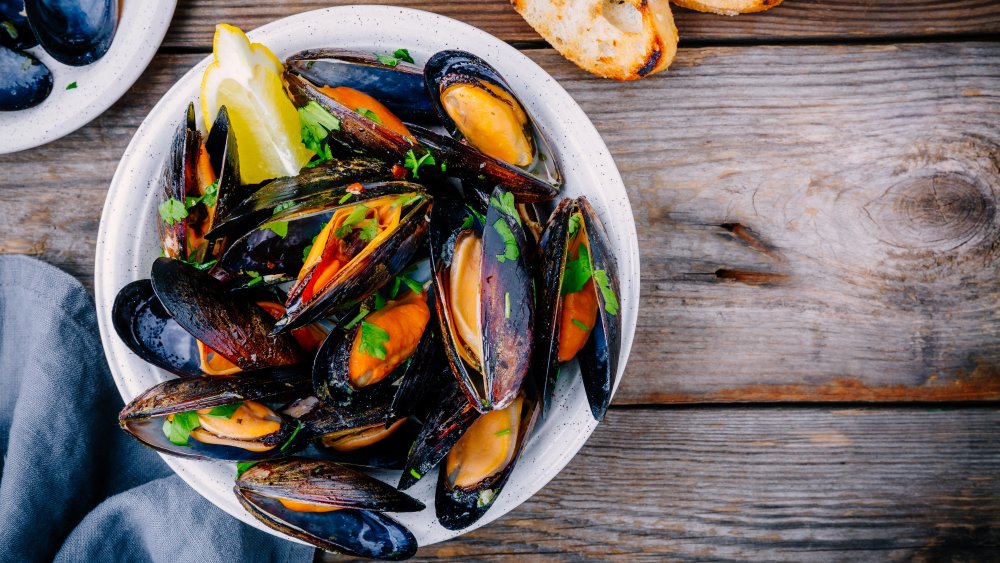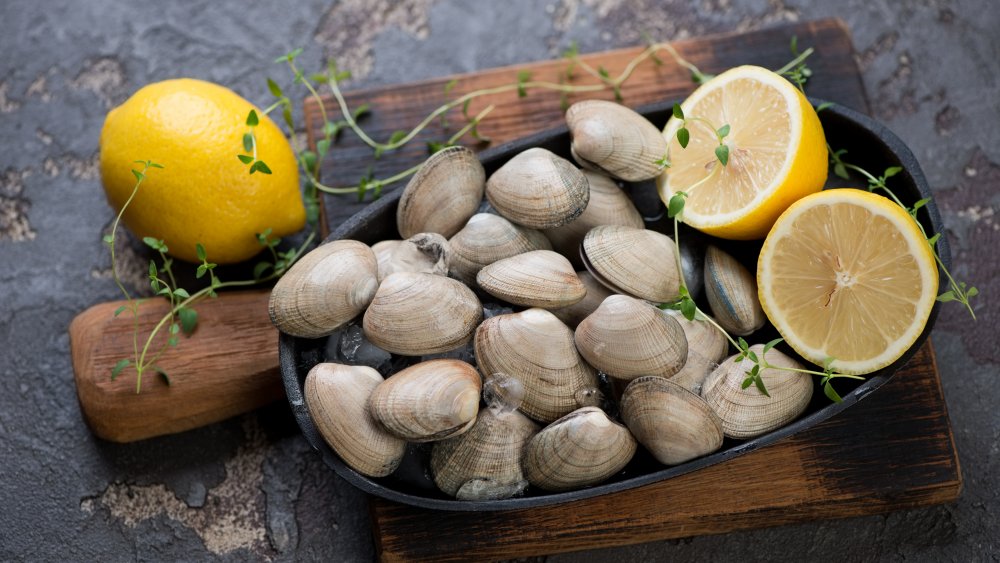The Real Difference Between Mussels And Clams
Clams and mussels are both shellfish — bivalves, specifically (via The National Oceanic and Atmospheric Administration). Both can grow in both freshwater and saltwater environments, but that's more or less where the similarities end (via The Ohio State University and Jstor). Starting on the outside, according to Cport, the color of the mussel shell tends to be a darker hue: green, blue, or black, whereas the majority of edible clams more often have a white, tan, or beige coloring on the outside (via Live Science).
Whereas mussels often have an oblong and thin shape, edible clams tend to be stouter, rounder, and fatter. Clams can grow to be much bigger than mussels with the non-edible giant clam being able to grow to more than 500 pounds and 4.25 feet long (via The Monterey Bay Aquarium).
Differences in flavor and preparation
Clams are often eaten raw, and it's not uncommon to see them on the raw bar menu at restaurants — in fact, millions of Americans eat raw clams (and oysters) each year. It's worth pointing out that eating cooked clams is safer, and will lessen your chances of contracting a food-borne illness (via ISSC).
Mussels, on the other hand, are almost always cooked one way or another. Though mussels are becoming increasingly popular in curry sauces (check out this yummy recipe on Epicurious), they're probably best known in simpler preparations such as steamed, or cooked with white wine (via BBC Good Food).
There's a significant difference in the taste between the two as well. Both shellfish have a briny, salty flavor to them, but some would argue that the taste of a mussel is more mild than that of a clam (via Spoon University). Both have a chewy texture, with clams perhaps being more chewy, depending on if they are cooked or raw. Both mollusks are easy to overcook, however, and doing so results in an extremely rubbery and unpleasant bite of seafood.

